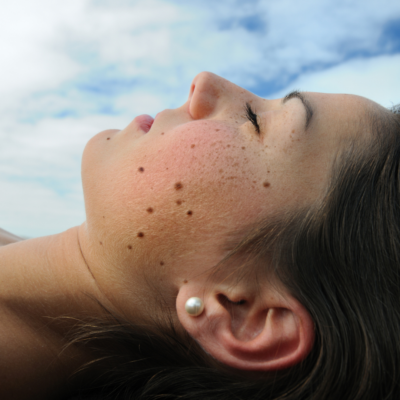Skin Cancer Screenings
Skin cancer is now the most prevalent cancer in the U.S. A skin cancer screening can provide an early intervention that could save your life or spare you the challenges of intensive cancer treatments.
How Often Should You Get a Skin Cancer Screening?
Stopping skin cancer before it has a chance to spread is vital. You should not completely rely on self-exams at home—though you should include them in your self-care routine. It takes medical dermatological training to recognize potential skin cancer growths, especially in areas you cannot see yourself, such as the backs of your ears and the top of your scalp.
Consider skin cancer screenings if you have any discoloration, abnormally shaped moles, changing moles, freckles, birthmarks, or a personal or family history of skin cancer. Otherwise, consistent self-examinations and promptly reporting any concerning changes to your general practitioner or dermatologist should aid in early detection.
What to Expect at Your Skin Cancer Screening
Unlike other preventive screenings, like mammograms or colonoscopies, a skin cancer screening involves no medical imaging tools. No MRI or CT scan is needed. All that is required is the experienced eye of a board-certified dermatologist and a magnifying tool.
In most cases, the screening will be over in a matter of minutes. During that time, your skin will be thoroughly examined from the top of your scalp to the soles of your feet, even exploring the areas between your toes.
You can prepare by arriving at the appointment on time, wearing no make-up, no nail polish and little to no jewelry. Make sure your hair is cleaned and combed in a way that will make your scalp accessible for examination.
What Happens If a Questionable Growth is Found?
If your California Skin Institute dermatologist detects an abnormality in a mole or patch of dry skin during your skin cancer screening, they will conduct a biopsy.
A biopsy is the best way to ascertain if cancer is present in the skin tissue. Your board-certified dermatologist will numb the area and carefully remove a small amount of tissue for examination under a microscope. We’ll then bandage the biopsied area and you’ll be good to go. The procedure takes only a few minutes.
Most biopsies do not result in a cancer diagnosis. If your biopsy result is positive and skin cancer is determined, rest assured that we’ll start working with you right away to develop a treatment plan that is best for you. The type of treatment will depend on many factors including the type of cancer, its location and stage, your individual characteristics and medical history.
California Skin Institute offers comprehensive skin-based medical treatments, including the most advanced surgical and non-surgical skin cancer treatments in California. Find a location near you.
Disclaimer
This is to be used only as an educational piece. Individuals should not use it to self-diagnose a skin condition or problem.




 / 291 Reviews
/ 291 Reviews